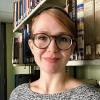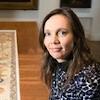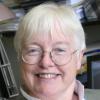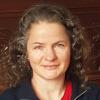Medieval European Medical Manuscripts
This working group focuses on manuscripts from the Osler Library at McGill University (Montreal, Canada) and Wellcome Collection (London,UK) as the starting point for exploring a range of aspects of medieval European medicine, science and culture. It brings together emerging and advanced scholars from history of medicine, history of science, art history and manuscript studies, to create a cross-disciplinary and collaborative dialogue. While aiming to stimulate research in the overall field of medieval medicine and science, the group aims to promote awareness of the interrelationships between the Osler and Wellcome collections, and other collections globally. There is also a specific goal to set in motion a scholarly edition of a newly acquired early 16th-century French manuscript at the Osler Library and to further research on a late 15th-century French manuscript at Wellcome Collection, both of which are available digitally.
Please set your timezone at https://www.chstm.org/user
Respectful Behavior Policy
Participants at Consortium activities will treat each other with respect and consideration to create a collegial, inclusive, and professional environment that is free from any form of discrimination, harassment, or retaliation.
Participants will avoid any inappropriate actions or statements based on individual characteristics such as age, race, religion, ethnicity, sexual orientation, gender identity, gender expression, marital status, nationality, political affiliation, ability status, educational background, or any other characteristic protected by law. Disruptive or harassing behavior of any kind will not be tolerated. Harassment includes but is not limited to inappropriate or intimidating behavior and language, unwelcome jokes or comments, unwanted touching or attention, offensive images, photography without permission, and stalking.
Participants may send reports or concerns about violations of this policy to conduct@chstm.org.
Upcoming Meetings
-
Thursday, January 23, 2025 11:00 am to 12:00 pm EST
TBA
-
Thursday, February 27, 2025 11:00 am to 12:00 pm EST
TBA
-
Thursday, March 27, 2025 11:00 am to 12:00 pm EDT
TBA
-
Thursday, April 24, 2025 11:00 am to 12:00 pm EDT
TBA
-
Thursday, May 22, 2025 11:00 am to 12:00 pm EDT
TBA
Past Meetings
-
November 21, 2024
Dr Orsolya Mednanszky (J. Paul Getty Museum), ‘Healing the Body, Healing the Soul: An Exhibition at the Walters Art Museum’
For a summary of the exhibition, please see the RESOURCES tab on this page.
Abstract: Premodern people considered maintaining their bodily and mental health a constant but imperative challenge and dedicated great efforts to finding remedies to heal their bodies and souls. This exhibition seeks to present the medical and spiritual endeavors of medieval European people and show how works of art participated in these therapeutic practices. Although this exhibition focuses primarily on European Christian visual culture, it also acknowledges the significant influence of ancient, Muslim, and Jewish medicine and philosophy on these ideas and practices.
Short bio: After studying art history in Budapest and Boston, Orsolya earned her Ph.D. at Johns Hopkins University in Baltimore. Between 2021 and 2023, she was a Zanvyl Krieger curatorial fellow at the Walters Art Museum in Baltimore and now works as an assistant curator of manuscripts at the Getty Museum in Los Angeles.
-
October 24, 2024
Kierri Price (Birkbeck, London/Wellcome Collection), 'Materiality, Embodiment, and Lived Experience in Medieval English Medical Manuscripts'
Abstract:
Modern-day healthcare is an exercise in tangible record-keeping, covering everything from prescription requests and test results through to health insurance terms and conditions and patient feedback forms. Despite their often-personal nature, many of these records can feel very detached, couched in unfamiliar, jargon-dense language, or otherwise overly simplistic and reductive. But there are also records of a much more emotionally-resonant kind: post-it notes taken into doctor’s appointments; leaflets with key aspects underlined or circled; internet history searches of a constellation of symptoms, suggestions, or concerns. These non-clinical records show something of the lived experience of medicine, an intimate insight into the emotions and personal perspectives of people grappling with their health and wellbeing.
Medieval records of healthcare have a very different character, with textual evidence of medicine predominated by recipes and remedies, alongside learned treatises. The encyclopaedic gathering of these texts, frequently on pristine pages, disguises the lived experience of the people these texts (supposedly) sought to treat. However, there are tangible remnants that can shed light on the emotional and practical experiences of medieval ‘patients’, allowing us a more nuanced understanding of what medieval medicine looked like for those who lived it.
This paper focuses on the marginalia, stains, and written interventions in a selection of medieval English medical manuscripts in Wellcome Collection and elsewhere, exploring what these deposits (intentional and accidental) can tell us about how medicine was actually practiced. By uniting textual records with material signs of use, this paper will uncover the hidden narratives of now-nameless individuals, giving voice to their anxieties, hopes, and lived experiences.
Biography:
Kierri Price recently finished their CHASE-funded PhD, a doctoral training partnership between Birkbeck, University of London, and Wellcome Collection. Their thesis (titled “Books, Bodies, and Belief: Awkward Technologies of Protection in Late Medieval England”) covers areas ranging from medical humanities and devotional culture to art history and literature. Kierri’s research is centred in materiality, especially notions of use, somatic engagement, and interactivity. Recent publications include co-authoring “Girding the Loins? Direct Evidence of the Use of a Medieval English Parchment Birthing Girdle from Biomolecular Analysis” in Royal Society Open Science 8:3 (2021), and a spotlight “Birth Girdle” study in the upcoming British Library exhibition book, Medieval Women: In Their Own Words.
-
May 23, 2024
Sarah Star (University of Toronto, Mississauga), 'Henry Daniel's Visions of Authority'
Abstract:
Dominican Friar and fourteenth-century English medical writer Henry Daniel wrote two encyclopedic medical treatises in Middle English: the Liber Uricrisiarum, a uroscopic manual extant in over thirty-seven manuscript witnesses, and an Herbal, extant in two. Writing medicine in Middle English during this period required Daniel to become a linguistic innovator, as he developed a technical vocabulary in English to communicate medical ideas and terms he had previously encountered only in Latin. This linguistic innovation has guided most of my work on Daniel over the past several years. But how does Daniel himself view authority? What is the relationship between medical and linguistic authority? This talk will analyze Daniel's representation of his relationships with different kinds of sources: learned and lay, men and women, written and oral, and others, as a way of uncovering what Daniel considered to be authoritative medicine and how he saw books as a way to distribute expertise beyond a narrow elite.Biography:
Sarah Star is an Assistant Professor in the Department of English and Drama at the University of Toronto, Mississauga. Her work analyzes the intersections of literature and medicine in the fourteenth and fifteenth centuries, focusing on the ways writers of what we now consider literary texts adopted and adapted physiological theories of blood to construct embodied identities. She co-edited Henry Daniel's Liber Uricrisiarum: A Reading Edition (University of Toronto Press, 2020) with E. Ruth Harvey and M. Teresa Tavormina and edited Henry Daniel and the Rise of Middle English Medical Writing (University of Toronto Press, 2022). Her first monograph project, for which a proposal is currently under review, is called The Seat of the Soul: A Middle English Medical Poetics of Blood.
-
March 28, 2024
Note change in time
Nicholas Everett (University of Toronto), 'Authority and elaboration in the Antidotarium Nicolai: establishing medieval pharmacy as a profession'
Abstract:
The Antidotarium Nicolai was a twelfth-century Salernitan text that became a Bible for compound pharmacy in the high middle ages: yet the original text contains c.60 drug recipes and is arguably less interesting than the c.120+ drug version that developed within decades and became authoritative. If we are to serve the public with an English translation of this monument in the history of medicine, which version should we translate? In reflecting the development of professional pharmacy in Europe, later versions better serve historical interests, but can leave us philologically adrift.
Biography:
Nicholas Everett studied modern history and literature at the Universities of Queensland and Griffith (Australia), then medieval history at Cambridge (PhD 1997). Since then he taught at the University of Illinois at Chicago, the University of Sheffield, the University of Queensland, Harvard University, and the University of Toronto (2003-). He is a Fellow of Trinity College, where he also serves as Public Orator. His areas of research include early medieval Italy, medieval medicine, manuscripts, legal documents, and Latin philology. Prof. Everett is a Fellow of the Royal Historical Society (UK), a Colleague of the European Science Foundation, and serves on the editorial board of several book series and journals in both history and pharmacy. Among his publications are Literacy in Lombard Italy c.568-774 AD (Cambridge 2003), The Alphabet of Galen. Pharmacy from Antiquity to the Middle Ages (Toronto 2012), and Patron Saints of Early Medieval Italy AD c.350-800. History and Hagiography in Ten Biographies (PIMS/Durham 2016).
-
February 22, 2024
'Keeping a finger on the pulse of the medieval manuscript market'
Please join us for a Q&A discussion with Jonathan A. Hill (bookseller, New York) and Carson Koepke (Yale University) on the trade in and collecting of medieval medical and scientific manuscripts. Mary Hague-Yearl (Osler Librarian, McGill University) will chair the discussion. Jonathan and Carson will each discuss the role they played in the journey of a recently acquired manuscript to the Osler Library, a late 13th-century copy of Gilles de Corbeil's De urinis with a commentary by Gilbertus Anglicus. This will lead into a larger discussion of the book trade, challenges, perspectives of a dealer and a collector. Topics to be discussed include provenance, financial challenges and working with institutions versus private collectors.
-
January 25, 2024
Meg Leja (Binghamton University), “The Carolingians as Collectors and Creators: Assessing Medical Manuscripts from the Ninth Century”
Abstract:
Meg Leja will explore a handful of manuscripts that were crucial to arguments she recently presented in her first monograph, Embodying the Soul: Medicine and Religion in Carolingian Europe (University of Pennsylvania Press, 2022). Representing the earliest sizeable corpus of medical material to survive in Latin, Carolingian manuscripts from the late eighth and early ninth centuries occupy an ambiguous position as both artifacts of medical thought during late antiquity and the Merovingian period and signs of new trends and beliefs at the moment of their production. Examining crucial pieces of evidence like the Lorscher Arzneibuch, this talk considers the ambiguity of originality when it comes to early medieval medicine.
Biography:
Meg Leja is an associate professor of history at Binghamton University in upstate New York. She received her PhD from Princeton University in 2015, and her published work grapples primarily with issues of cultural history during the Carolingian period. Her teaching at Binghamton focuses on the early Middle Ages, premodern medicine, and religious studies. She is a contributor to the Corpus of Early Medieval Latin Medicine (CEMLM), a research group dedicated to cataloguing all extant Latin medical writing in the first millennium and challenging stereotypes regarding early medieval healthcare.
-
November 30, 2023
Katherine Storm Hindley (Nanyang Technological University, Singapore), 'Textual Magic: Medical Charms in Medieval England'
Abstract:
Katherine Storm Hindley discusses her recent book, Textual Magic: Charms and Written Amulets in Medieval England. Drawing on an original database of over a thousand charms from medieval England, the book explores the shifting use of spoken and written words for healing and protection across the medieval period. The results allow for an exploration of how the healing power of charms was mediated through language, materiality, and physical interaction.
Biography:
Katherine Storm Hindley is Assistant Professor of English at Nanyang Technological University, Singapore; Director of the London International Palaeography School; and a Senior Research Associate at the Intellectual Forum, Jesus College, University of Cambridge. She received her PhD in Medieval Studies from Yale University in 2017. She also holds an MA (Oxon.) in English and an MSt in Medieval Studies, both from the University of Oxford. Her research and teaching lie at the intersection of medieval literature, manuscript studies, and the history of medicine.
-
October 26, 2023
We are delighted to host a discussion to launch Taylor McCall's The art of anatomy in medieval Europe (London: Reaktion Books, 2023). Taylor will join us for a conversation on her newly-published book with Jack Hartnell (University of East Anglia) and Elma Brenner (Wellcome Collection).
Abstract:
This book is the first modern history of medieval European anatomical images. Richly illustrated, it explores the many ways in which medieval surgeons, doctors, monks and artists understood and depicted human anatomy. Taylor McCall refutes the common misconception that Renaissance artists and anatomists such as Leonardo da Vinci and Andreas Vesalius were the ‘fathers’ of anatomy, and the first to perform scientific human dissection; on the contrary, she proves these Renaissance figures drew upon centuries of visual and written tradition in their works.Biography:
Taylor McCall is the Managing Editor of Speculum: A Journal of Medieval Studies and has held positions at the British Library, University College London, and Christie’s. Since completing her PhD at the University of Cambridge in 2017, she has published several articles in the fields of medieval medicine and art, and her research has been supported by the International Center of Medieval Art and the Paul Mellon Centre for Studies in British Art.
-
June 12, 2023
Ayman Yasin Atat (Technical University of Braunschweig), 'Manuscripts as Storytellers. What Could Manuscripts as Witnesses of Pharmaceutical Knowledge Tell Us? A Case Study of Rawḍat al-ʿiṭr Manuscript'
Abstract:
The exchange of pharmaceutical knowledge between the civilizations played a crucial factor in the development of the materia medica culture throughout history, this exchange happened either through travellers (both traders and scientists), or by translation of the previous medical and pharmaceutical writings into other languages. In this context, the best example in the history of medicine and pharmacy is the translation movement from Greek into Arabic which flourished especially in Baghdad during the 8th century and later by support from the Abbasid Caliphs which led to producing an enormous number of Arabic medical and pharmaceutical manuscripts which spread to many geographical areas around the Mediterranean. The production of pharmaceutical manuscripts continued in the early Ottoman periods with support from Ottoman sultans too. However, these manuscripts were not pure translations of the previous texts but were inserting many new or tested knowledge based on their authors’ experience, therefore, we could say that each manuscript, given the biography of its author, could work as the best witness of the pharmaceutical knowledge in both historical period and geographical area.
One of the most interesting pharmaceutical manuscript that was authored in the 15th century was entitled Rawḍat al-ʿiṭr (“Paradise of Fragrance/ Garden of Pharmacy”), the author al-Shirwānī was an important early Ottoman physician in the service of several rulers and the Ottoman sultans, and the aim of writing this text was to be as an integral reference for all members of the pharmaceutical profession, employing a careful citation system of the classical authorities, such as Ibn Sīnā, al-Rāzī, and even Galen and Dioscorides, and others. This text provides rich knowledge about the fifteenth century pharmaceutical practice in the Ottoman realm, including the preparation of recipes for drugs and medical procedures.
This manuscript could be a witness of the Ottoman pharmaceutical sciences, shedding much light on the use of simple drugs in Ottoman pharmaceutical recipes, and also expressing the transmission and development of medical and pharmacological knowledge in the early Ottoman period. However, studying the contents of this manuscript might tell us further more details not only pharmaceutical ones, but might go in-depth with details of social, ethical, and even might have modern practical pharmaceutical aspects.
Therefore, this talk will take the audience on a journey between the chapters and the lines of this book, not only to know about the pharmaceutical situation in the early modern Ottoman age but to figure out what could this manuscript tell us more about other details and aspects of that period.
Biography:
Ayman Yasin Atat, a pharmacist, received his PhD in the History of Medical Science from Aleppo University in 2014, which he combined with his background as a pharmacist and as a native speaker of Arabic; his initial work covered the fields of history of medicine, history of the materia medica, and Arabic medical and pharmaceutical manuscripts. Between 2014-2016, he conducted a postdoc project at the Faculty of Medicine at Istanbul University about medicine in the Ottoman civilization of the 19th century.
Between 2017-2020, he worked at the Technical University of Braunschweig in the Department of History of Science and Pharmacy, as a fellow, where he studied the materia medica culture in Arabic traditions. In addition, he starts to prepare a bilingual edition (Arabic and English) of the Rawḍat al-iṭr manuscript, which was written by al-Shirwānī (15th century). Between January 2020 and April 2022, he was a guest researcher in the Arabic seminar at FU Berlin, to investigate the unique and rare Arabic pharmaceutical manuscripts housed at the Berlin State Library. Afterward, he came back to the Department for History of Science and Pharmacy at TU Braunschweig, where he currently holds a position as a researcher conducting a project and to complete his Habilitation in the history of pharmacy with a focus on his research fields of Arabic pharmaceutical manuscripts and history of pharmacy in Arabic and Ottoman civilizations.
-
April 27, 2023
Professor Linda Voigts, “The Sweating Sickness [Sudor Anglicus]: Mortality and Possibility of Recovery”
Abstract:
Sweating Sickness occurred in England in intermittent epidemics from 1485 well into the sixteenth century. It was a viral disease, not to be confused with the bacillary plague, Yersinia pestis. Mortality from the Sweat was significant, especially among wealthy upper-class young adult males. The 1502 death of Prince Arthur, regnal heir to Henry VII, was likely from Sudor Anglicus. The disease did not provide immunity against subsequent outbreaks. Therapy involving isolation and bed rest came to be understood as efficacious and was utilized in the treatment of prominent patients. Treatises on efficacious therapy for the disease were written by Thomas Forestier, by the 2nd Duchess of Norfolk, and-- most important--by the English physician John Caius (1510-1573). These texts are discussed in this session, from the extant manuscript version of Forestier’s advice to Caius’s printed work.Biography:
Linda Ehrsam Voigts is Curators' Professor Emerita in the Department of English at the University of Missouri-Kansas City. Her numerous publications and contributions to scholarship include “The Master of the King’s Stillatories,” in The Lancastrian Court: Proceedings of the 13th Harlaxton Symposium, ed. Jenny Stratford (Donington: Shaun Tyas, 2003), “The Declaracions of Richard of Wallingford: A Case Study of a Middle English Astrological Treatise,” in Medical and Scientific Writing in Late Medieval English, ed. Irma Taavitsainen and Päivi Pahta (Cambridge: Cambridge University Press, 2004), “Medicine for a Great Household (ca. 1500): Berkeley Castle Muniments Select Book 89” with Ann Payne (Studies in Medieval and Renaissance History, 3rd Series, Vol. 12 (2016), and Scientific and Medical Writings in Old and Middle English: An Electronic Reference, with Patricia Deery Kurtz (CD database of information on more than 8,000 texts (University of Michigan Press, 2000); 2005 edition accessible at National Library of Medicine. Updated on-line at the University of Missouri-Kansas City). She is a Fellow of the Medieval Academy of America and Subject Editor, Medicine for the Oxford Dictionary of the Middle Ages.
Group Conveners
-

Elma Brenner
Elma Brenner (PhD, LMS) is a Research Development Specialist at Wellcome Collection and Co-Editor of Social History of Medicine. At Wellcome Collection she supports research on the medieval and early modern European collections and leads on work with early career researchers. Her own research focuses especially on health and religious culture in late medieval France and in 2020 she received a Dr. Edward H. Bensley Research Travel Grant from the Osler Library to study the Osler’s newly acquired French manuscript that is a focus of this working group. Her publications include Leprosy and charity in medieval Rouen (2015) and ‘From medieval embroidery to human skin: engaging with remarkable objects from the Wellcome Library’ (2016), and she is co-editor of Leprosy and identity in the Middle Ages: from England to the Mediterranean (forthcoming 2021).
-

Anna Dysert
Anna Dysert is an associate librarian at McGill University Library, where she works as a cataloguer and metadata specialist for rare materials. She holds an MA from the Centre for Medieval Studies, University of Toronto, and an MLIS in Archival Studies from McGill’s School of Information Studies. She is currently working on a doctoral project on the 12th-century Latin manuscripts of Isaac Israeli’s Universal and Particular Diets.
-

Ross MacFarlane
Ross has worked on cataloguing archives, in outreach and engagement and designed numerous object and collections-based teaching and learning sessions, for a wide range of visiting groups at Wellcome Collection. At the core of his work is a close understanding of archives and other historical sources and a desire to promote the collections at Wellcome to the widest possible array of researchers.
-

Julia Nurse
Julia Nurse is a Research Development Specialist at Wellcome Collection who currently runs the Exploring Research Seminar programme. With a background in art history and museum studies, her interests focus on the interaction of medicine, science and art within the context of print culturei n the Early Modern period. She sits on the committee of the Herbal History Research Network and has in recent times been focusing on research around the use of plants within herbals from the Medieval to Early Modern periods. She has contributed to numerous exhibitions and digital articles at Wellcome Collection, notably one on Plant Portraits which focused on one of the manuscripts at the heart of the research of this working group. Previously, Julia worked within the Prints and Drawings department at the British Museumas an Assistant Curator.
-

Faith Wallis
Professor Faith Wallis (Ph.D. Toronto 1985) is Professor Emerita in the Department of History and Classical Studies and the Department of Social Studies of Medicine at McGill University. Her research focuses on the textual and manuscript transmission of medical and scientific knowledge (particularly computus) in the Middle Ages. Her anthology of translated sources, Medieval Medicine: a Reader, was published by University of Toronto Press in 2010. She is presently editing the writings of Bartholomeus ‘of Salerno’, a key figure in the emergence of academic medicine in the twelfth century: Bartholomeus' Isagoge Commentary appeared with SISMEL in 2022. She is a Fellow of the Society of Antiquaries.
-

Mary Yearl
Mary Hague-Yearl (MLIS, PhD) is the Osler Librarian at the Osler Library of the History of Medicine and an Associate Member of McGill’s Department of Social Studies of Medicine. She wrote her doctoral thesis on the medical and spiritual functions of regular bloodletting in medieval monastic life. In 2020-2021, she has resumed her research as a Folger Institute Fellow, pursuing a project entitled “Bloodletting in the first 150 years of printing: a window into vernacular medicine.” In her work at the Osler Library, she often engages in lessons about representation in medicine; medical ethics; and subcultures of medical knowledge. It is related to this last area that she is most interested in engaging with this working group to discover new approaches to the study of the Library’s recipe books.